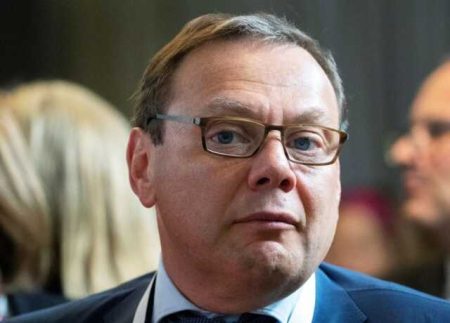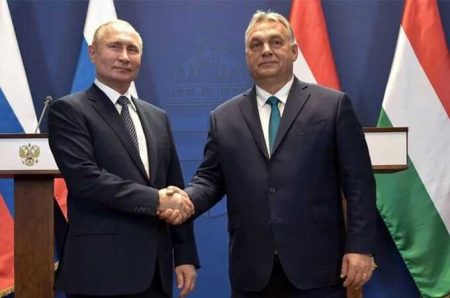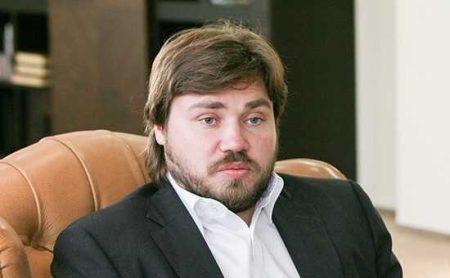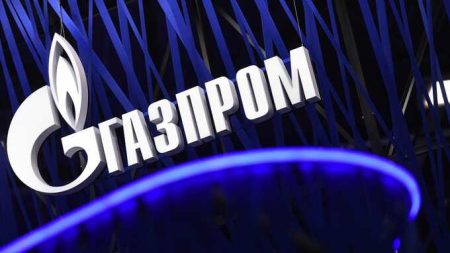Kolomoisky in Cleveland. New details from across the ocean.
While in Ukraine, the case of the withdrawal of funds from Privatbank's depositors is not being pursued by the Office of the Prosecutor General. In the United States, they are still investigating Kolomoisky's activities and adding interesting details to the story of the biggest banking fraud in history.
We want to remind the reader that the former owners of Privatbank, Igor Kolomoisky and Gennady Bogolyubov, moved most of the withdrawn money from Privatbank to the United States to buy assets. They did this with the help of partners Mordechai Korf and Uriel Laber and many fake companies, often using the word 'optima' in their names.
The allegations from American authorities regarding the transactions of these 'optimums' are consistent: loans were given for one purpose and used for other purposes, loans had to be repaid with money earned by the borrowers, and repaid with new loans, sometimes borrowed by third-party companies. The collateral used for the loans was not real property, but the right to claim supplies that didn't exist. The main question is: how did hundreds of different 'optimums,' which did not engage in regular business activities and had minimal funds in their accounts, buy real estate in the United States using money from loans issued by Ukrainian companies?
A recent investigation by the Pittsburgh Post-Gazette unveiled new details concerning the Cleveland aspect of this story, where Optima Ventures owned over 260,000 square meters of commercial real estate during its peak.
The Westin Hotel was particularly notable. It hosted the US Republican Party Convention in 2016, where then-candidate Donald Trump established his headquarters. The future president also held a press conference in the hotel's lobby the morning after his significant speech at the convention. Five years later, the Westin Hotel became part of the evidence in a federal investigation into how a Ukrainian oligarch was laundering hundreds of millions of dollars stolen from the largest Ukrainian bank.
Unlike Ukraine, the United States is actively investigating Kolomoisky and his company, carrying out searches, making arrests, and building a solid body of evidence. Despite this, American journalists are indignant: the existence of the Optima network of companies is one of the most troubling examples of the flaws in American financial transparency laws. They are concerned that Kolomoisky and his company were able to purchase a large portion of Cleveland without disclosing details of the agreements or the ultimate beneficiaries.
They would probably be even more impressed if they knew about the 'Ukrainian' aspect of this story and how the money from Privatbank was used to obtain this property in the United States. The funds flowed out of credit lines for entirely different purposes, were divided, combined with money from other loans, transferred to accounts in the Cypriot branch of the bank, and ultimately ended up in the United States as 'investments'.
So, it's not surprising that the movement of illegal money around the United States is interesting. It's fair to wonder why the money's origin wasn't checked properly. The 58-year-old billionaire with citizenship of multiple countries bought real estate in the US using Delaware companies meant to hide who the real beneficiaries of the scams are. At some point, someone in Cleveland should have noticed that these unknown Delaware companies were amassing a lot of real estate. They should have started checking at least something. Instead, the real estate 'kings' also got loans from locals for noble purposes.
For instance, to renovate the mentioned hotel and turn it into a luxury brand. But it didn't work out – no one paid back the $36 million credit, the hotel wasn't revived, and now court officials are in charge, trying to sell something to compensate for part of the potential losses.
US financial crime experts are using this case to support a proposal by the US Treasury Department to make corporate real estate deals more transparent by requiring ownership information to be disclosed. A year ago, changes were made to the corporate transparency law thanks to Kolomoisky's scam, requiring companies to provide the Financial Crime Fight Network with the name, date of birth, address, and other information about the owners of assets, where the owner is anyone who owns more than 25% of the asset.
The Americans have already called what happened in Cleveland the 'million dollar pipeline,' which is now being investigated by a grand jury.
The Cleveland 'pipeline' began in 2008, when Kolomoisky and his partners 'invested' $12.9 million in the US to buy one of the city’s most famous high-rise buildings, a business center at 55 Public Square. That same year, they also spent another $36 million in the US to buy One Cleveland Center. In 2010, they moved $18.5 million into the country through four different offshore bank accounts to buy the Huntington Building.
Unfortunately, this 'investment boom' happened during tough times in Cleveland, with decline, mortgage crisis, and unemployment. This helps explain why the excitement about any investor coming in was stronger than the desire to check the sources of his 'investment.'
According to US prosecutors, the funds came to Cleveland from the Ukrainian Privatbank through carefully crafted schemes by the former bank management for its then owner.
By 2011, Kolomoisky had acquired two more Cleveland landmarks: a 21-story tower and the Westin Hotel. After that, Kolomoisky, through his companies, became the largest owner of commercial real estate in the city, using funds from loans issued to his Ukrainian companies by his own Ukrainian bank.
According to the US Attorney’s Office, the fraudulent nature of these loans is clear, for example, the $12 million for which the One Cleveland Center was purchased is a loan issued to a ferroalloy plant in Ukraine to finance ongoing operations.
And we know a lot of such stories as a blueprint. Loans taken by the Pokrovsky GOK, Nikopol or Zaporizhzhya Ferroalloy, as a result, went to the purchase of American assets. Even more, we remember that Kolomoisky filed more than forty lawsuits here in Ukraine from the mentioned borrowers in order to obtain confirmation that these loans were repaid and the bank had no claims against his companies. The calculation is so-so, but Kolomoisky, in all seriousness, hoped to bring a piece of paper to the American court confirming the return of funds on one of the loans, and thereby convince the court of his innocence. That American court, which has already familiarized itself with the entire multi-year scheme for withdrawing money from the bank in the documents of the US Department of Justice, where it is written in black and white: partially taken loans were repaid with new loans, which allowed the scheme to last so long. That is, knowing that in the States everyone has long been aware that loans were partially repaid so that thefts would not be so conspicuous, he still hoped for something.
Well, in their investigation, our American colleagues clarify this issue and note that these expectations are in vain. According to them, the US prosecutor’s office filed a motion that the entire cash flow was built on fraud and theft. “Not only were the purposes of the loans in loan applications a lie, but also the methods of their repayment, because new loans were issued to return old ones,” prosecutors say. Therefore, the future trial of this case in the United States, let the accused not be upset, although it will not be full of surprises, but, nevertheless, will become interesting.
Recall that earlier the Pittsburgh Post-Gazette has already talked about the “achievements” of Pan Kolomoisky in the US metallurgical industry and how he bought up factories from New York to Texas with stolen money, according to US prosecutors.




